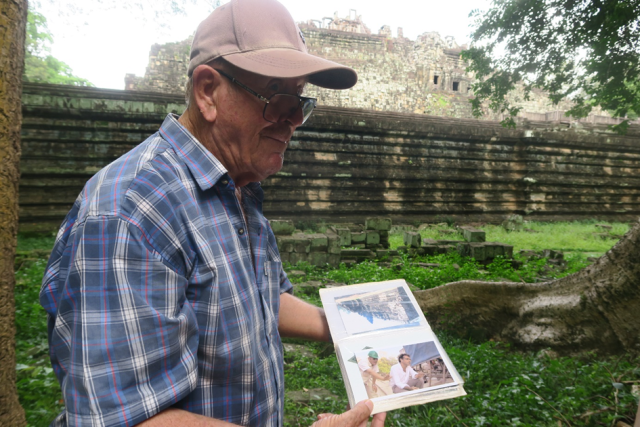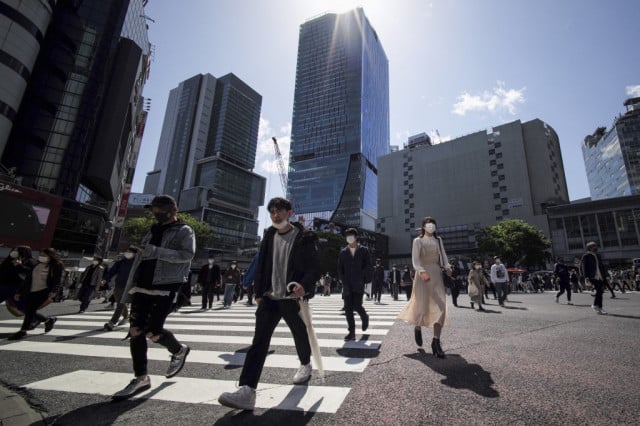Visiting the Baphuon Temple with a 2000s Restoration Team Member

- By Nicolò Tissier
- August 25, 2023 11:55 AM
SIEM REAP - “In Memory of Pascal Royère (1965-2014), who dedicated 18 years of his life to turn a ruin into a prestigious temple.” His colleagues of the Apsara National Authority, his friends, and his Cambodian team of the Baphuon.
Those words are written in Khmer and French on a stele on the first level of the Baphuon temple, in tribute to the French architect Pascal Royère who led, between 1995 and 2011, the restoration of the Baphuon temple in the Angkor Archeological Park in Siem Reap Province.

Dominique Thollon, who had agreed to show me the Baphuon that day, stopped in front of the stele to collect himself, visibly moved. He too dedicated part of his life to restore this temple as he was Royère’s chief assistant and site manager for a whole decade.
Tollon is a French man who has been living in Cambodia since the early 2000’s. After a career as a sculptor, he dedicated his second professional life to the renovation of Angkor.
“The way I arrived here is the result of chance,” Thollon said. “After a severe injury, I couldn’t be a sculptor anymore. Then I saw a television show about Angkor temples. The architect Pascal Royère was being interviewed. I decided that I wanted to come to Cambodia to meet him and see if I could work in temple restoration. And so I did.”

After more than a year working for Artisans d’Angkor as a stone professional, Tollon was recruited shortly after 2000 by Royère and the EFEO (École française d'Extrême-Orient or French School of the Far East) to be Royère’s primary assistant and site manager on the Baphuon temple site. He was in charge of the workers’ teams.
At the time, the Baphuon temple was in the middle of its second restoration—the EFEO had been in the process of restoring the temple in 1972 when its team had had to leave Angkor due to the arrival of the Khmer Rouge—that had started in 1995. So Thollon more or less joined in the middle. The project was completed in 2011, the event marked by a ceremony on July 3, 2011, held in the presence of King Norodom Sihamoni and former French Prime Minister François Fillon.
Now retired, Thollon still lives in Siem Reap and visits regularly the temples. “I spent more than 10 years here, but I still discover things,” he said, as he walked along the Baphuon temple. In front of the temple, some stones lie on the ground: They were not used for the restoration as the restoration teams could not find where they belonged in the temple’s structure. “Before the restoration, around 300,000 stones were spread around the temple and in the forest,” Thollon explained. “Only around 30,000 stones have been left unused: It was a gigantic puzzle.”

As we strolled around the temple, Thollon showed some pictures of how the temple looked before restoration and does look today. The difference is striking. He has kept those pictures like a treasure because they are his only memories of that period.
Showing a stone in a wall, Thollon started to explain the technical process involved to properly embed a stone in a wall so that it will remain in place for the next hundreds of years. And this process has applied to each element of the temple, he said, which is why what seemed simple may have represented days, weeks, or even months of work for the restoration teams. “I could talk about a single stone for hours,” he said.
One of Thollon’s biggest projects on the site was the restoration of the gigantic head of the Buddha, which had collapsed in 2000. He oversaw its restoration.
Certain elements of the temple are original while others are copies made from original models. “It was necessary because certain original stones were unusable or missing,” Thollon said. The integration of new stones among the original ones was the main problem the restoration team had to face. They needed to make the new ones look older, he said. First, they did so by sculpting and repolishing those stones, but something was still missing. So finally, they used natural products to make a mixture to color the stones, and that worked. “Now, the stones that have been treated [with that mixture] cannot even be differentiated from the others,” Thollon said. “I’m happy that the temple stands as it is today.”















